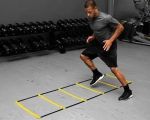The Impact of Wearable Technology on Fitness Tracking: My Personal Experience
As someone who has always been passionate about fitness, I can vividly remember the time I decided to invest in wearable technology. At the time, I had no idea how much it would change my approach to fitness. Over the years, I’ve seen how these devices have evolved and revolutionized fitness tracking. In this article, I’ll take you through the journey of wearable technology in fitness, sharing not only my personal experience but also exploring how these innovations can help you take your fitness game to the next level.
1. The Rise of Wearable Fitness Devices
Wearable technology has come a long way, and today, it's an indispensable part of the fitness industry. Initially, wearable devices like pedometers were the first to appear, offering simple step counting. But as technology advanced, these devices evolved into smartwatches and fitness trackers that could measure heart rate, track calories, monitor sleep, and even provide real-time GPS tracking for outdoor activities. The most notable brands, like Fitbit, Garmin, and Apple, have made huge strides in refining their products to give users a more accurate and comprehensive understanding of their health and fitness levels.
2. How Wearables Help Track My Fitness Goals
As someone who loves to stay active, I’ve found that wearable devices give me invaluable insight into my fitness journey. Whether I’m running, cycling, or doing yoga, my wearable device allows me to monitor my heart rate in real-time, so I know when to push harder and when to ease off. The ability to set specific goals – such as aiming for 10,000 steps a day or tracking my calorie burn during workouts – has made me more accountable to myself. It’s like having a personal trainer on my wrist, guiding me every step of the way.
3. The Power of Heart Rate Monitoring
Heart rate monitoring is one of the most important features of wearable fitness technology, and it has certainly been a game-changer for me. Knowing my heart rate during exercise helps me gauge the intensity of my workout and ensures that I’m staying within the optimal zone for fat burning or cardiovascular health. This feature has been especially helpful when I’m training for a race or trying to improve my endurance. Wearable devices can alert me if my heart rate is too high or too low, which is crucial in preventing overexertion or under-training.
4. Sleep Tracking: Understanding the Importance of Recovery
Another significant benefit of wearable technology is sleep tracking. Many fitness trackers now come with advanced sleep tracking capabilities that measure the quality and duration of your sleep. Initially, I didn’t realize how much of an impact poor sleep could have on my fitness progress. After using a wearable device, I discovered that my sleep patterns were inconsistent, leading to suboptimal recovery and performance during workouts. With insights from my device, I was able to make adjustments to my sleep schedule, resulting in more energy during workouts and a faster recovery time.
5. Motivation and Accountability
One of the most underrated aspects of wearable technology is the motivational aspect. Many devices come with reminders to move if you’ve been sedentary for too long, and they offer rewards for achieving milestones. I’ll admit that I’ve often found myself going for a walk or doing a quick workout just to hit my step goal or to earn a badge on my device. These small motivational boosts can be surprisingly effective in keeping me active, even on days when I’m feeling a little less motivated. Plus, seeing my progress in real-time helps me stay on track and gives me a sense of accomplishment.
6. Real-Life Examples of Wearable Technology in Action
Let me share a couple of real-life stories that highlight the power of wearable technology in fitness. A friend of mine, who had always struggled with consistency in working out, decided to start using a fitness tracker. Initially, she used it to track her steps, but soon she became hooked on setting goals and tracking her heart rate. Within a few months, she had lost weight, improved her fitness levels, and gained a deeper understanding of her body’s needs. Her experience is a perfect example of how wearable technology can turn fitness tracking into an engaging and rewarding experience.
Another example comes from a colleague of mine who is a professional cyclist. He uses a high-end GPS smartwatch that not only tracks his rides but also provides insights into his performance metrics like power output, cadence, and elevation. This detailed data helps him adjust his training plan to improve his speed and stamina, ultimately making him more competitive in his races. Without his wearable device, he admits that he would have struggled to analyze his performance in such detail and make informed adjustments to his training routine.
7. The Future of Wearable Fitness Technology
The future of wearable fitness technology looks incredibly promising. With advancements in sensors and artificial intelligence, wearables are becoming even smarter and more accurate. For instance, some devices now have advanced algorithms that can predict potential health issues based on the data they collect, allowing users to take preventative action before a problem arises. I’m excited to see how this technology continues to evolve, and I believe it will become even more integral to fitness tracking in the years to come.
8. Wearable Technology’s Role in Health Monitoring Beyond Fitness
While wearable technology has revolutionized fitness tracking, it’s also playing a key role in overall health monitoring. Devices like the Apple Watch and others now offer features like ECG readings and fall detection, making them valuable tools for people with chronic health conditions or the elderly. These innovations not only make fitness tracking more comprehensive but also provide an added layer of safety and health monitoring.
Whether you’re training for a marathon, trying to lose weight, or just staying active for overall health, wearable technology can be a valuable tool. From real-time heart rate monitoring to detailed sleep tracking, these devices provide insights that are not only motivating but also highly effective in helping you meet your fitness goals.








